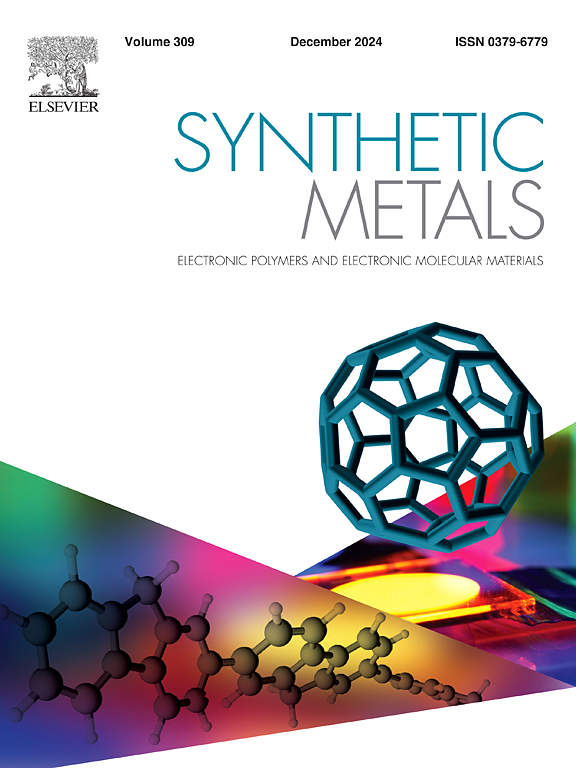Interface engineering in perovskite solar cells via DTP-OMe-2Br-modified Spiro-OMeTAD
IF 4.6
3区 材料科学
Q2 MATERIALS SCIENCE, MULTIDISCIPLINARY
引用次数: 0
Abstract
Perovskite solar cells (PSCs) have achieved remarkable power conversion efficiencies (PCEs) exceeding 27 %, yet their long-term operational stability remains a significant barrier to commercialization. The state-of-the-art hole transport layer (HTL) based on Spiro-OMeTAD relies on hygroscopic lithium salts and volatile co-additives to boost conductivity, which inevitably accelerates interfacial degradation. Here, we introduce a molecular co-doping strategy in which a brominated dithieno[3,2-b:2′,3′-d]pyrrole derivative (DTP-OMe-2Br) is incorporated into Spiro-OMeTAD to synergistically combine their advantages. Owing to its planar donor-rich framework and bromine functionalities, DTP-OMe-2Br preferentially localizes at the perovskite/HTL interface, enhancing hole mobility, passivating undercoordinated Pb²⁺ defects, and increasing hydrophobicity without disrupting Spiro’s film-forming properties. As a result, devices achieve a champion PCE of 24.41 %, surpassing the 23.06 % of the pristine Spiro-OMeTAD reference, and retain over 85 % of their initial efficiency after 2500 h in ambient air. This work demonstrates that rationally designed small-molecule additives can serve as multifunctional interfacial modifiers for hybrid HTLs, offering a generalizable route toward high-efficiency and durable PSCs.
dtp - ome - 2br改性Spiro-OMeTAD在钙钛矿太阳能电池中的界面工程
钙钛矿太阳能电池(PSCs)已经取得了显著的功率转换效率(pce),超过27% %,但其长期运行稳定性仍然是商业化的重大障碍。基于Spiro-OMeTAD的最先进的空穴传输层(HTL)依赖于吸湿性锂盐和挥发性助添加剂来提高导电性,这不可避免地会加速界面降解。本文介绍了一种分子共掺杂策略,将溴化二噻吩[3,2-b:2 ',3 ' -d]吡咯衍生物(DTP-OMe-2Br)掺入Spiro-OMeTAD中,以协同结合它们的优势。由于DTP-OMe-2Br具有平面富给体框架和溴官能团,DTP-OMe-2Br优先定位于钙钛矿/ html界面,增强了空穴迁移率,钝化了pb2 +欠配位的缺陷,并在不破坏Spiro成膜性能的情况下增加了疏水性。因此,设备的PCE达到了24.41 %,超过了原始Spiro-OMeTAD参考的23.06 %,并且在环境空气中2500 h后保持了超过85 %的初始效率。本研究表明,合理设计的小分子添加剂可以作为混合HTLs的多功能界面改性剂,为高效耐用的psc提供了一条可推广的途径。
本文章由计算机程序翻译,如有差异,请以英文原文为准。
求助全文
约1分钟内获得全文
求助全文
来源期刊

Synthetic Metals
工程技术-材料科学:综合
CiteScore
8.30
自引率
4.50%
发文量
189
审稿时长
33 days
期刊介绍:
This journal is an international medium for the rapid publication of original research papers, short communications and subject reviews dealing with research on and applications of electronic polymers and electronic molecular materials including novel carbon architectures. These functional materials have the properties of metals, semiconductors or magnets and are distinguishable from elemental and alloy/binary metals, semiconductors and magnets.
 求助内容:
求助内容: 应助结果提醒方式:
应助结果提醒方式:


